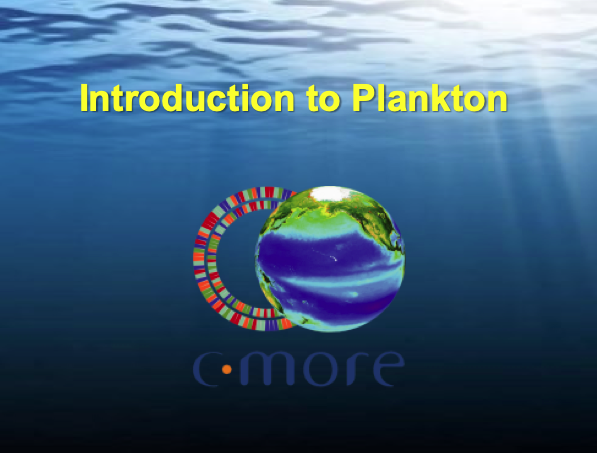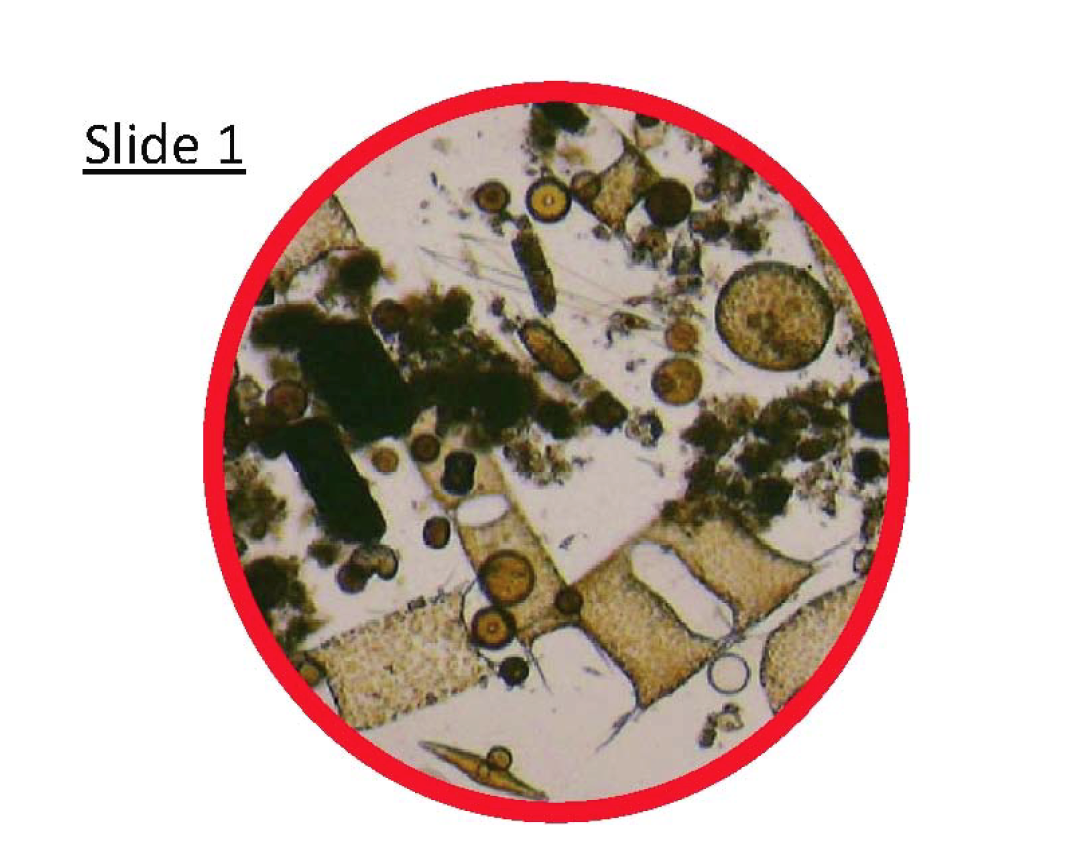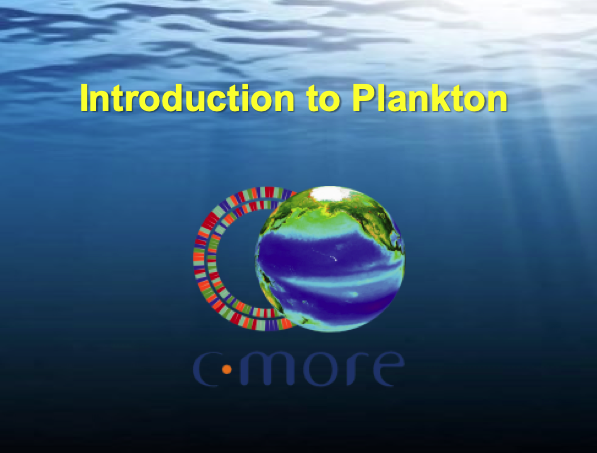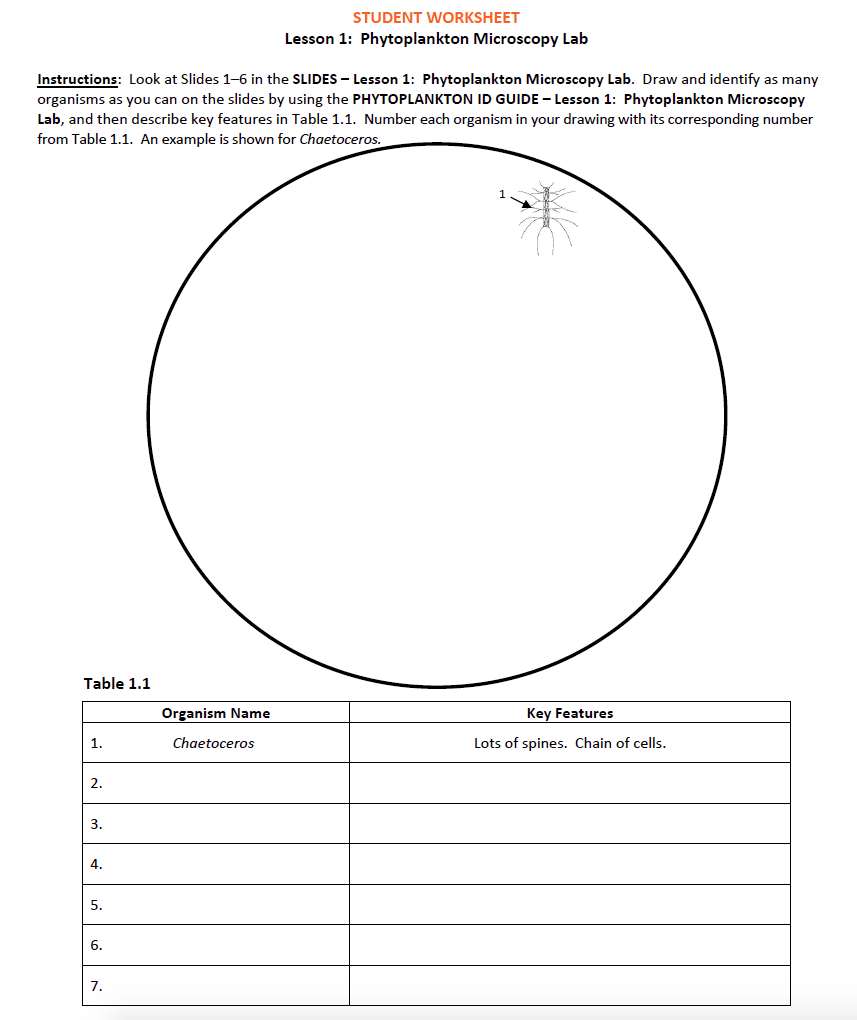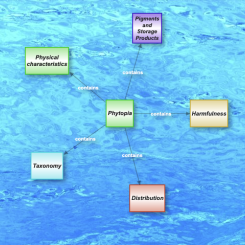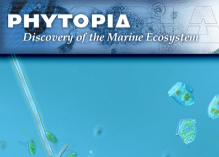Lesson Plans
Introduction to Phytoplankton
Overview
In this lesson, students investigate and identify various phytoplankton using images that were previously taken with a compound microscope. Credit: National Science Foundation-sponsored Center for Microbial Oceanography: Research and Education (C-MORE)
Materials Required
- TEACHER GUIDE – Lesson 1: Introduction to Plankton
- POWERPOINT SCRIPT
- STUDENT WORKSHEET – POWERPOINT – Lesson 1: Introduction to Plankton (Page 1)
- TEACHER ANSWER KEY to STUDENT WORKSHEET – POWERPOINT – Lesson 1: Introduction to Plankton. NOTE:*Email kits@soest.hawaii.edu to request a completed teacher answer key. Please include name, school and grade(s) taught in your request.
- STUDENT WORKSHEET – Lesson 1: Phytoplankton Microscopy Lab (Page 2)
- SLIDES – Lesson 1: Phytoplankton Microscopy Lab
- PHYTOPLANKTON ID GUIDE – Lesson 1: Phytoplankton Microscopy Lab
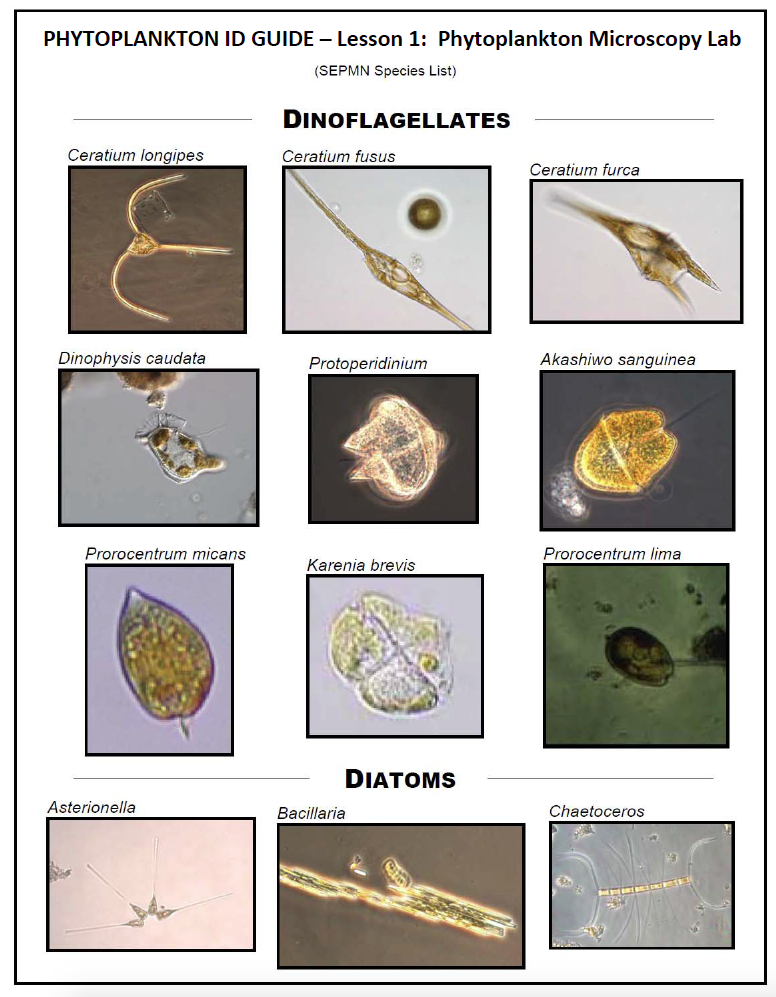
Advance Preparation:
- Queue the PowerPoint, "Introduction to Plankton." A script is included as a guide.
Procedure
1. Distribute a STUDENT WORKSHEET – PowerPoint – Lesson 1: Introduction to Plankton to each student. Review the PowerPoint or play the narrated PowerPoint presentation to familiarize your students with marine plankton.
2. Address the main topics of the PowerPoint presentation with your students:
- phytoplankton are plant‐like and have certain adaptations for survival;
- zooplankton are animal‐like and can exist as meroplankton (organisms that are plankton for part of their life cycle) or holoplankton (organisms that remain plankton for their entire life cycle);
- plankton form the basis of the marine food web.
3. Review the answers to the STUDENT WORKSHEET.
MAKE OBSERVATIONS:
1. Distribute a STUDENT WORKSHEET – Lesson 1: Phytoplankton Microscopy Lab to each student.
2. Divide the students into five groups. Distribute one copy of SLIDES – Lesson 1: Phytoplankton Microscopy Lab and two copies of PHYTOPLANKTON ID GUIDE – Lesson 1: Phytoplankton Microscopy Lab to each group.
3. Tell your students that they will be completing a phytoplankton microscopy lab. Explain that the SLIDES – Lesson 1: Phytoplankton Microscopy Lab are phytoplankton images that were taken with a compound microscope. Compound microscopes have very high magnification, which is essential to view these tiny phytoplankton. In Lesson 2, dissecting microscopes (which have lower magnification) suffice to study the larger zooplankton. After a quick introduction to the phytoplankton lab, students should be able to work independently in their groups.
4. Have students use the PHYTOPLANKTON ID GUIDE – Lesson 1: Phytoplankton Microscopy Lab to identify the marine phytoplankton that are found on the various photomicrographs (microscope images) provided in the SLIDES – Lesson 1: Phytoplankton Microscopy Lab.
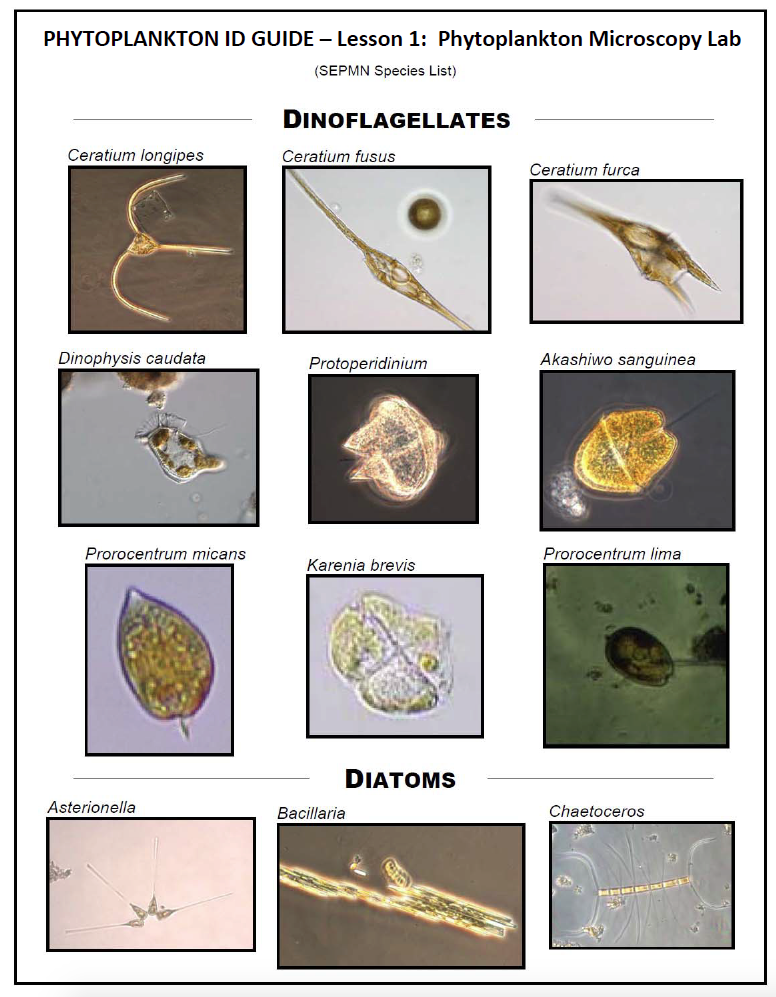
ANALYZE & DESCRIBE YOUR DATA
- Have the students review their slides and identify and document the phytoplankton.
- Students should identify these and draw the phytoplankton on their STUDENT WORKSHEET – Lesson 1: Phytoplankton Microscopy Lab in the circle. Students will label them as 1, 2, 3... for identification only. Students also describe the key characteristics of these phytoplankton in the table.
SHARE YOUR IDEAS
- When students are finished, have them check their identifications/descriptions with the class.
- Possible student answers may include the following:
- SLIDE 1:
- Odontella
- Pleurosigma
- Coscinodiscus
- SLIDE 2:
- Skeletonema
- Coscinodiscus
- Pleurosigma
- SLIDE 3:
- Protoperidinium
- Coscinodiscus
- Pseudo-nitzschia
- Rhizosolenia
- SLIDE 4:
- Pleurosigma
- Ditylum
- Skeletonema
- Chaetoceros
- SLIDE 5:
- Thalassionema
- Pseudo-nitzschia
- Coscinodiscus
- SLIDE 1:
- Present the questions below and facilitate class discussion:
- What phytoplankton appear the most often? Coscinodiscus, Pleurosigma Least often? Thalassionema, Ditylum
-
What adaptations do these have that makes them unique? What advantages do these adaptations provide to the organism?
- Coscinodiscus -These centric diatoms are single cells that do not have adaptations to help them stay afloat in the water column. Instead, they are at the mercy of the ocean's stratified water to keep them at the top of the water column. This phytoplankton often resembles a pillbox.
- Pleurosigma - This diatom usually has a long diamond shape and features regularly pulsating inner organelles to help it move through the water.
- Thalassionema - This phytoplankton have small bristles that stick out from the top and bottom of the cell and around its perimeter. In the middle, is a long thread that it uses to connect itself with another Thalassionema.
- Ditylum - This phytoplankton is easily recognized by its two large spines on its rectangular body. These spines help to increase surface area in order to keep them afloat, instead of sink.
-
Refer to the Guide and PowerPoint for more information about adaptations and environments.
Disciplinary Core Ideas:
- LS1A: Structure and Function
Crosscutting Concepts:
- Structure and Function
Science and Engineering Practices:
- Planning and Carrying out Investigations
- The student will use images previously taken with a compound microscope to identify various species of common phytoplankton
- What are phytoplankton?
- What are common structural and behavioral adaptations of phytoplankton?
Phytoplankton are the foundation of the aquatic food web, the primary producers, feeding everything from microscopic, animal-like zooplankton to multi-ton whales. Small fish and invertebrates also graze on the plant-like organisms, which are eaten by larger marine animals and so on. Like land plants, phytoplankton consume carbon dioxide and produce oxygen during photosynthesis. In fact, phytoplankton created about half the oxygen we breathe today. Phytoplankton are extremely diverse, varying from photosynthesizing bacteria (cyanobacteria) to plant-like diatoms, to armor-plated coccolithophores (drawings not to scale).

Phytoplankton growth depends on the availability of sunlight and nutrients. When conditions are favorable, phytoplankton populations can grow at a rate faster than they are consumed, a phenomenon known as a bloom. Phytoplankton blooms may cover hundreds of square kilometers and are easily visible from space. In this image, ocean waters glow peacock green off the coast of Scandinavia on July 18, 2018. Phytoplankton blooms often occur along coastlines where deep, nutrient-rich waters well up from the ocean depths. The light color of this ocean water suggests the calcite plating of coccolithophores is turning the water milky.
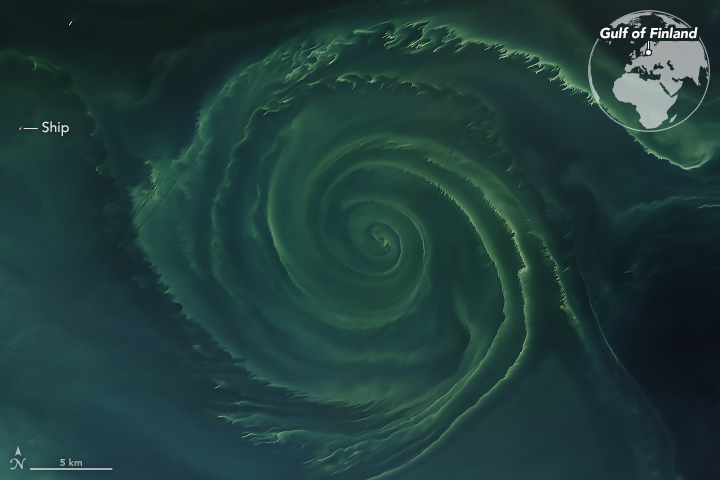
During photosynthesis, phytoplankton consume carbon dioxide on a scale comparable to land plants. Some of this carbon is carried to the deep ocean when phytoplankton die and sink, and some is transferred to different layers of the ocean as phytoplankton are eaten by other creatures, which themselves generate waste and die. Worldwide, this biological carbon pump transfers about 10 gigatons of carbon from the atmosphere to the deep ocean each year. Even small changes in the growth of phytoplankton may affect atmospheric carbon dioxide concentrations, which feed back into global surface temperatures.
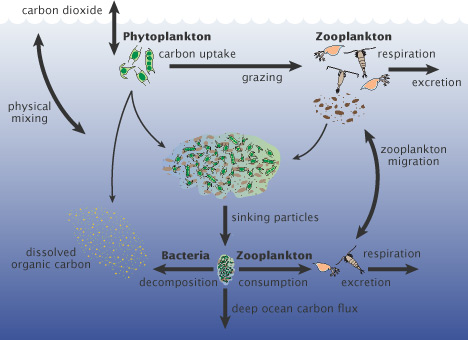
Credit: NASA Earth Observatory
Fun "Phyto" Facts:
- Diameter: < 1 um to over 100 um
- If you stack 1000 one micron phytoplankton end to end, the length of the stack would equal the width of a penny! (18,000 would fit across the face)
- Concentration: 1000's to 1,000,000 per milliliter
- If you fill a soda can with seawater sampled from a thick, oceanic phytoplankton bloom, the can may contain a many as 75 to 100 million cells!
- Global Phytoplankton Biomass: < 1% of the plant biomass on earth BUT responsible for nearly half the net photosynthesis of the biosphere!
- General understanding of photosynthesis and marine food webs
- Phytoplankton are too small to be important—trees win.
- Algae (phytoplankton) are plants
Our ocean teems with life and many of its most vital species are invisible to us. Like on land, the ocean has deserts, forests, meadows, and jungles, providing habitats for many forms of life. The types of life in these habitats are determined by microscopic algae that float in our ocean. Known as “phytoplankton,” these tiny organisms come in many different shapes, sizes, and colors. The diversity of phytoplankton types determines the roles they play in ocean habitats. It also determines how well they capture energy from the sun and carbon from the atmosphere.
Phytoplankton provide food for small zooplankton, tiny animals that float in our ocean. Like humans, these grazers actively select their food. In the same way, larger zooplankton prey upon smaller zooplankton. Step by step, energy captured from phytoplankton transfers to bigger creatures. As the energy moves throughout the food web, it can ultimately be used by humans, who consume sea creatures found in the marine food web.
The ocean is a fluid that is constantly in motion. Hosting the largest three-dimensional living space on earth, it supports many habitats. For example, the North Atlantic is home to highly productive "forests" each spring. Its blooms of carbon-rich phytoplankton fuel the fisheries of New England. The crystal-clear waters around Florida host productive coral reefs and fisheries. At times, however, this area is plagued by toxic phytoplankton.
Today's satellites reveal the quantity of phytoplankton at the ocean surface. Yet we cannot detect the diversity of species. For the first time, NASA's PACE satellite will:
- Reveal the diversity of phytoplankton found in our ocean on global scales;
- Allow us to understand the role that phytoplankton diversity has on life in the ocean; and
- Help us predict the “boom or bust” of fisheries along with marine hazards such as harmful algal blooms.
- Molecular and Cellular Biologist - Study cellular molecules and organelles to understand cell function and organization.
- Marine Biologist/Biological Oceanographer - research biological oceanography and the associated fields of chemical, physical, and geological oceanography to understand marine organisms.
- Teacher computer/projector only

